- Clone
- OX-90 (See other available formats)
- Regulatory Status
- RUO
- Other Names
- OX-2, MRC
- Isotype
- Rat IgG2a, κ
- Ave. Rating
- Submit a Review
- Product Citations
- publications

-

C57BL/6 mouse splenocytes were stained with CD19 Brilliant Violet 421™ and CD200 (clone OX-90) Alexa Fluor® 647 (left), or rat IgG2a, κ Alexa Fluor® 647 isotype control (left). -

C57 frozen spleen section was fixed with 4% paraformaldehyde (PFA) for 10 minutes at room temperature and blocked with 5% FBS for 1 hour at room temperature. Then the section was stained with 5 µg/mL of CD3 (clone 17A2) Alexa Fluor® 594 (green) and CD200 (clone OX-90) Alexa Fluor® 647 (red) at 4°C overnight. Nuclei were counterstained with DAPI (blue). The image was scanned with a 10X object and stitched with MetaMorph® software.
| Cat # | Size | Price | Quantity Check Availability | Save | ||
|---|---|---|---|---|---|---|
| 123815 | 25 µg | 90€ | ||||
| 123816 | 100 µg | 231€ | ||||
CD200 (OX-2 antigen) is a type-1 membrane glycoprotein containing two extracellular Ig-like domains. CD200 a highly conserved type I membrane glycoprotein that is expressed on a variety of cell types including thymocytes, some T cells, endothelial and follicular dendritc cells, B cells, and brain tissue (neurons); but not on NK cells, granulocytes, monocytes, or macrophages. CD200 costimulates T cell proliferation. It may regulate myeloid cell activity in a variety of tissues. CD200 is the ligand for CD200 receptor (CD200R). The CD200 Receptor is restricted to myeloid cells, and it is believed that its engagement with CD200 results in inhibition and/or downregulation of myeloid cell activity. Blocking of CD200/CD200R interactions decreases myeloid cell inhibitory thresholds which results in enhanced immune activation.
Product DetailsProduct Details
- Verified Reactivity
- Mouse
- Antibody Type
- Monoclonal
- Host Species
- Rat
- Immunogen
- Soluble fusion protein of the extracellular region of mouse OX-2 antigen with domains 3 and 4 of rat CD4 fusion protein.
- Formulation
- Phosphate-buffered solution, pH 7.2, containing 0.09% sodium azide.
- Preparation
- The antibody was purified by affinity chromatography and conjugated with Alexa Fluor® 647 under optimal conditions.
- Concentration
- 0.5 mg/mL
- Storage & Handling
- The antibody solution should be stored undiluted between 2°C and 8°C, and protected from prolonged exposure to light. Do not freeze.
- Application
-
FC - Quality tested
IHC-F - Verified - Recommended Usage
-
Each lot of this antibody is quality control tested by immunofluorescent staining with flow cytometric analysis. For flow cytometric staining, the suggested use of this reagent is ≤ 0.25 µg per million cells in 100 µL volume. For immunohistochemistry on frozen tissue sections, a concentration range of 5.0 - 10 µg/mL is suggested. It is recommended that the reagent be titrated for optimal performance for each application.
* Alexa Fluor® 647 has a maximum emission of 668 nm when it is excited at 633 nm / 635 nm.
Alexa Fluor® and Pacific Blue™ are trademarks of Life Technologies Corporation.
View full statement regarding label licenses - Excitation Laser
-
Red Laser (633 nm)
- RRID
-
AB_2819849 (BioLegend Cat. No. 123815)
AB_2819850 (BioLegend Cat. No. 123816)
Antigen Details
- Structure
- Immunoglobulin (Ig) superfamily
- Distribution
-
Thymocytes, some T cells, endothelial, B cells
- Function
- Co-stimulatory factor in T cell proliferation
- Ligand/Receptor
- CD200R
- Antigen References
-
1. Hoek RM, et al. 2000. Science 290:1768.
2. Gorczynski R, et al. 2004. J. of Immunol. 172:7744.
3. Gorczynski L, et al. 1999. J. Immunol. 162:774.
4. Rosenblum MD, et al. 2004. Blood 103:2691.
5. Zhang S, et al. 2004. J. of Immunol. 173:6786.
6. Barclay AN, et al. 2002. Trends Immunol. 23:285. - Gene ID
- 4345 View all products for this Gene ID
- UniProt
- View information about CD200 on UniProt.org
Related Pages & Pathways
Pages
Related FAQs
Other Formats
View All CD200 Reagents Request Custom Conjugation| Description | Clone | Applications |
|---|---|---|
| Purified anti-mouse CD200 (OX2) | OX-90 | FC,IHC-F |
| PE anti-mouse CD200 (OX2) | OX-90 | FC |
| APC anti-mouse CD200 (OX2) | OX-90 | FC |
| TotalSeq™-A0079 anti-mouse CD200 (OX2) | OX-90 | PG |
| Alexa Fluor® 647 anti-mouse CD200 (OX2) | OX-90 | FC,IHC-F |
| Alexa Fluor® 594 anti-mouse CD200 (OX2) | OX-90 | IHC-F |
| PE/Dazzle™ 594 anti-mouse CD200 (OX2) | OX-90 | FC |
| PE/Cyanine7 anti-mouse CD200 (OX2) | OX-90 | FC |
| TotalSeq™-B0079 anti-mouse CD200 (OX2) | OX-90 | PG |
| TotalSeq™-C0079 anti-mouse CD200 (OX2) | OX-90 | PG |
Customers Also Purchased
Compare Data Across All Formats
This data display is provided for general comparisons between formats.
Your actual data may vary due to variations in samples, target cells, instruments and their settings, staining conditions, and other factors.
If you need assistance with selecting the best format contact our expert technical support team.
-
Purified anti-mouse CD200 (OX2)
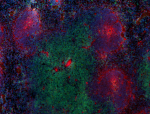
C57BL/6 frozen spleen section was fixed with 4% paraformalde... -
PE anti-mouse CD200 (OX2)
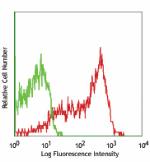
BALB/c mouse splenocytes stained with OX-90 PE -
APC anti-mouse CD200 (OX2)
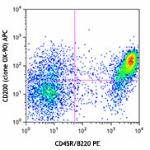
C57BL/6 mouse splenocytes were stained with CD45R/B220 PE an... 
-
TotalSeq™-A0079 anti-mouse CD200 (OX2)
-
Alexa Fluor® 647 anti-mouse CD200 (OX2)

C57BL/6 mouse splenocytes were stained with CD19 Brilliant V... 
C57 frozen spleen section was fixed with 4% paraformaldehyde... -
Alexa Fluor® 594 anti-mouse CD200 (OX2)

C57BL/6 frozen spleen section was fixed with 4% paraformalde... -
PE/Dazzle™ 594 anti-mouse CD200 (OX2)

C57BL/6 mouse splenocytes were stained with CD45R/B220 FITC ... -
PE/Cyanine7 anti-mouse CD200 (OX2)

C57BL/6 mouse splenocytes were stained with CD45R/B220 FITC ... -
TotalSeq™-B0079 anti-mouse CD200 (OX2)
-
TotalSeq™-C0079 anti-mouse CD200 (OX2)
 Login / Register
Login / Register 










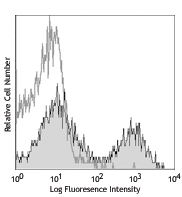
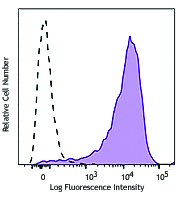

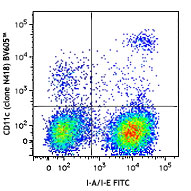



Follow Us